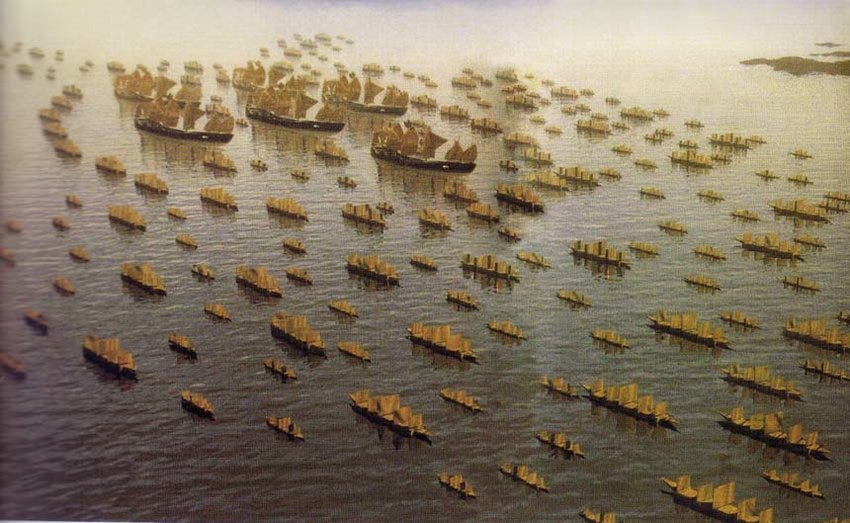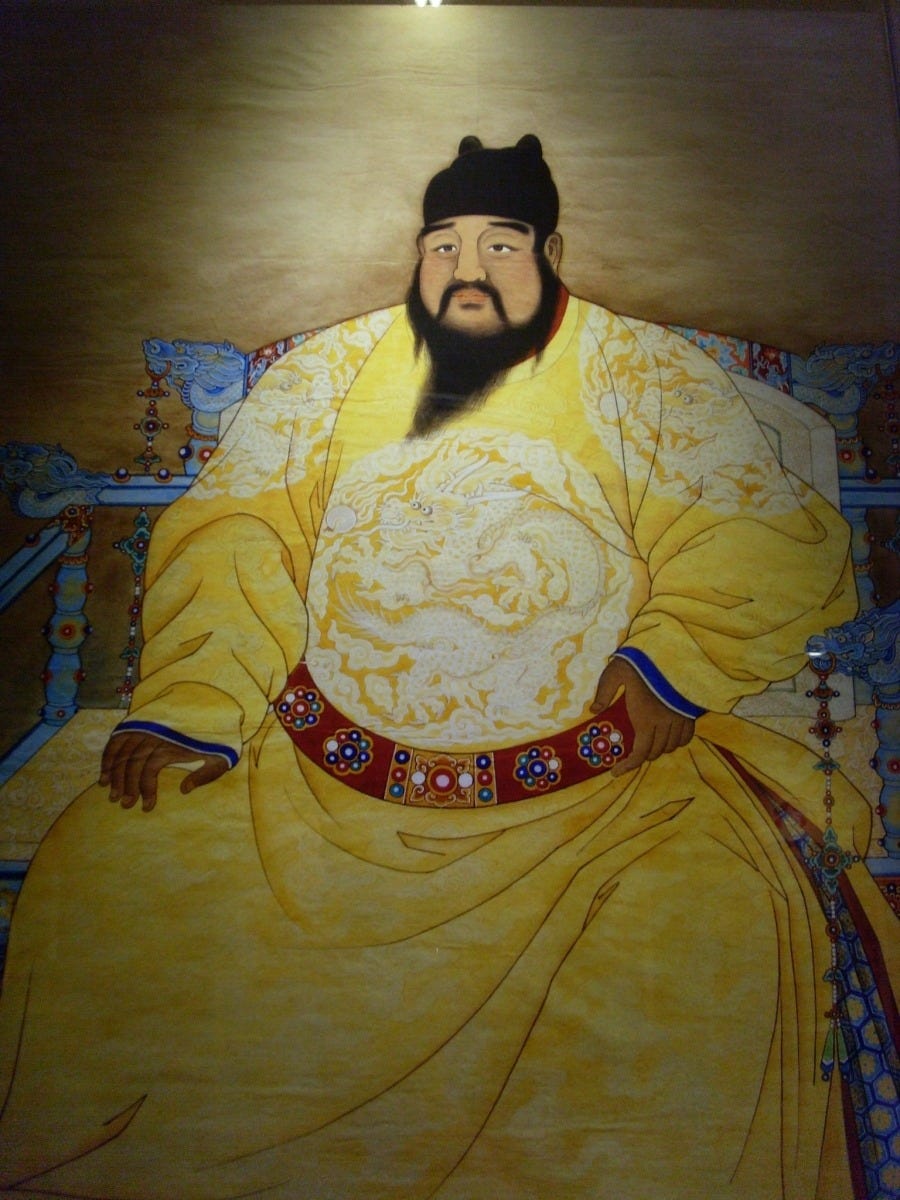In 1403, still early in China’s Ming dynasty, the Yongle Emperor Zhu Di ordered the construction of the historically massive fleet of hundreds of large boats known as the Treasure Fleet. Captained by Eunuch Grand Director and trusted confidant of the emperor, Zheng He, the royal fleet embarked on seven voyages to many nations, carrying diplomats, hunting pirates and enemies of the emperor, establishing valuable trade routes, and returning with tributes from various national leaders. Crewed by more than 20,000 marines, soldiers, and assorted travelers, these ships formed a formidable floating city that traversed the coasts of Asia and beyond. The seven voyages of the Treasure Fleet spanned nearly three decades through the reigns of the Yongle, Hongxi, and Xuande emperors. These adventures included diplomacy, trade, pirate hunting, and some other largely one-sided combat.
The Xuande Emperor Zhu Zhanji, faced a different world than his grandfather who set the Treasure Fleet in motion. Mongolian rivals threatened from the land, not the sea. Zhanji also faced a growing rebellion from the menacing uncle whose experienced army Zhanji defeated. Within the empire, the merchant class grew wealthier amidst a new era of international trade dominance. Needing resources to fend off rivals, and not wanting to contend with the additional power of a rising merchant class, Zhanji had most of the boats burned. Fragments of the Treasure Fleet remained for a century, but China’s brief oceanic domination of international trade ended with the fleet’s seventh voyage, which returned to port in 1433.
By the late 1400s, Portuguese captain Bartolomeu Dias led ships around the Cape of Good Hope. A few years later, countryman Vasco da Gama made his way all the way around Africa and reached the trading post of Calicut (now Calcutta), India. Thus began the ascension of European capitalism, cutting out the middlemen of both the Mediterranean and the Silk Road, the latter of which suffered from combat to the East in concert with economic starvation due to loss of control of European markets.
Europe was a different beast than China---united in Christendom under the Vatican, though ostensibly governed by elite royals under different banners, each with their own nations. The Reformation of 1517 effectively decentralized power by severing Vatican authority over the churches of many nations. Wealthier through trade and technology, these nations stopped sending so much tribute to the Vatican, and paid for larger standing armies of their own. Accumulating and holding wealth is easier when the security answers to you. The competing states of Europe had no choice but to embrace an emerging merchant class that made that independence possible. Any European nation that burned its boats (or other means of trade and production) would find itself outmatched by a wealthier neighbor that did not. In this, the world saw a new equilibrium of decentralized competitive interests.
Perhaps starting leaner (the European vessels were far smaller and fewer in number than those of the majestic Chinese fleet), and with the motivating need to return on the investments in expeditions proved an advantage. Competition and wealth pushed an arms race among nations inventing new sailing technologies for the purpose of reaching South and Southeast Asia with the goal of bringing back valuable goods such as spice and silk. Similarly, the great merchant families invested in more universities and libraries through this period of European Renaissance that perhaps only represented a rebirth locally to Italy, and an entirely original era for most of the rest of Europe. A chain of technological development birthed a virtuous cycle of wealth creation that went hand-in-hand with the exploration of technologies that lifted all boats.
Why?
Because no central authority could burn them.









"Why? Because no central authority could burn them."
Antique Blockchain! *smirk*